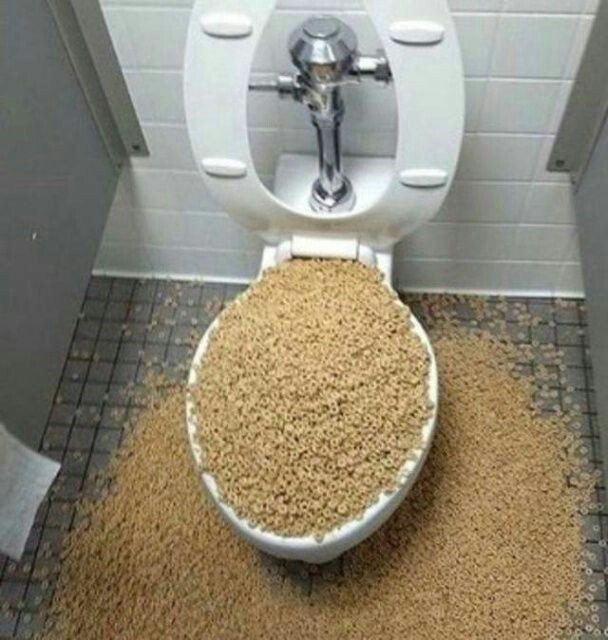Is it Logical to Flush Food in the Toilet?
Is it Logical to Flush Food in the Toilet?
Blog Article
The author is making a number of great points about Is it safe to flush food (especially rice) down the toilet? overall in this content on the next paragraphs.

Introduction
Many people are often faced with the issue of what to do with food waste, especially when it concerns leftovers or scraps. One typical concern that emerges is whether it's all right to purge food down the commode. In this write-up, we'll explore the reasons that individuals might take into consideration flushing food, the consequences of doing so, and different techniques for correct disposal.
Reasons individuals may think about purging food
Lack of recognition
Some individuals might not know the prospective injury triggered by purging food down the commode. They might wrongly think that it's a harmless method.
Ease
Purging food down the commode may feel like a fast and simple option to throwing away unwanted scraps, especially when there's no nearby trash can available.
Laziness
In some cases, individuals might merely choose to flush food out of large idleness, without taking into consideration the consequences of their activities.
Consequences of flushing food down the commode
Environmental effect
Food waste that winds up in rivers can add to contamination and damage marine ecological communities. Furthermore, the water made use of to purge food can stress water sources.
Pipes concerns
Flushing food can bring about blocked pipes and drains pipes, creating pricey plumbing repairs and inconveniences.
Sorts of food that ought to not be purged
Coarse foods
Foods with fibrous appearances such as celery or corn husks can obtain tangled in pipelines and trigger clogs.
Starchy foods
Starchy foods like pasta and rice can absorb water and swell, leading to clogs in pipes.
Oils and fats
Greasy foods like bacon or food preparation oils ought to never ever be flushed down the bathroom as they can strengthen and create blockages.
Proper disposal approaches for food waste
Using a waste disposal unit
For homes geared up with garbage disposals, food scraps can be ground up and flushed with the pipes system. Nonetheless, not all foods appropriate for disposal in this manner.
Recycling
Certain food product packaging materials can be reused, reducing waste and lessening environmental effect.
Composting
Composting is an eco-friendly way to dispose of food waste. Organic products can be composted and utilized to enhance soil for gardening.
The importance of correct waste monitoring
Lowering environmental harm
Correct waste administration methods, such as composting and recycling, assistance lessen contamination and maintain natural resources for future generations.
Securing plumbing systems
By preventing the method of flushing food down the toilet, homeowners can prevent pricey plumbing repairs and keep the stability of their pipes systems.
Verdict
To conclude, while it might be alluring to flush food down the commode for comfort, it's important to comprehend the possible repercussions of this activity. By taking on appropriate waste monitoring techniques and disposing of food waste properly, individuals can contribute to healthier plumbing systems and a cleaner setting for all.
FLUSH FOOD DOWN THE TOILET?
FLUSHING FOOD CAN CAUSE BLOCKED DRAINS IN YOUR HOME
All of the plumbing fixtures in your home are connected to the same sewer pipe outside of your home. This outdoor sewer pipe is responsible for transporting all the wastewater from your home to the Council sewer mains. Even small pieces of food that go down the kitchen sink can cause problems for your sewer. It should therefore be obvious that flushing larger bits of food, such as meat, risks a clog in either the toilet itself or the sewer pipes. Flushing greasy food is even more problematic because oil coagulates when it cools, coating the interior lining of your pipes.
THE TOILET IS NOT A BIN
Food isn’t the only thing that people shouldn’t be flushing down the toilet. People use the toilet to dispose of all kinds of things such as tampons, makeup wipes, dental floss, kitty litter and even underwear. Water goes to great lengths to educate residents about the high costs and stress placed on wastewater treatment systems simply from people flushing the wrong stuff down the toilet. It costs taxpayers millions of dollars each year, and homeowners thousands in blocked drain repairs.
FLUSHING FOOD IS A WASTE OF WATER
Flushing food is a waste of our most precious resource - water. In June this year Level 1 water restrictions were introduced to protect water supply from drought conditions. Much of New South Wales continues to be affected by prolonged drought with recent figures revealing up to 97 per cent of the state remains in drought. Depending on whether you have a single or dual flush toilet, every single flush uses between five and 11 litres of water. In the current climate this is a huge amount of water to be wasting on flushing food that should be placed in the bin (or better yet, the compost).
https://www.jabplumbingsolutions.com.au/blog/can-you-flush-food-down-the-toilet

Do you appreciate reading up on Flushing Food Down the Toilet?? Write a remark down below. We would be pleased to hear your suggestions about this review. Hoping to see you back again in the future. Enjoyed our post? Please share it. Let others locate it. We recognize the value of your readership.
Call Today Report this page